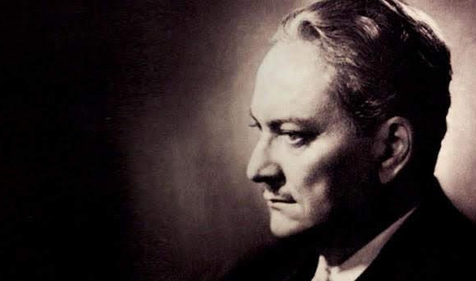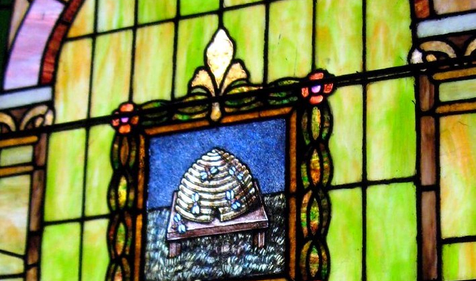“Where you see wrong or inequality or injustice speak out, because this is your country. This is your democracy—make it—protect it—pass it on. You are ready. Go to it.” - Bro. Thurgood Marshall
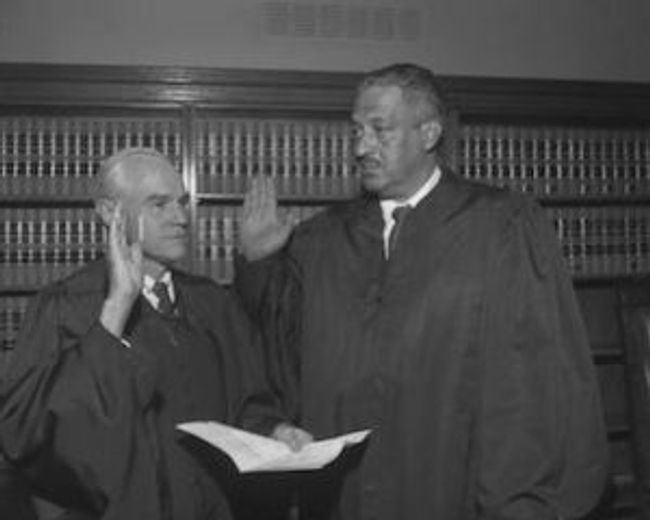
In November 2022, the Scottish Rite Masonic Museum & Library unveiled five new inductees to “The Masonic Hall of Fame: Extraordinary Freemasons in American History” – an exhibition that highlights Masons who, through their outsized contributions to Freemasonry, government, the arts, and other pursuits, made a profound impact on their world and ours.
One of these inductees is Thurgood Marshall, a man who fought tooth and nail for a more equitable United States as a civil rights lawyer and, later, as a justice of the Supreme Court.
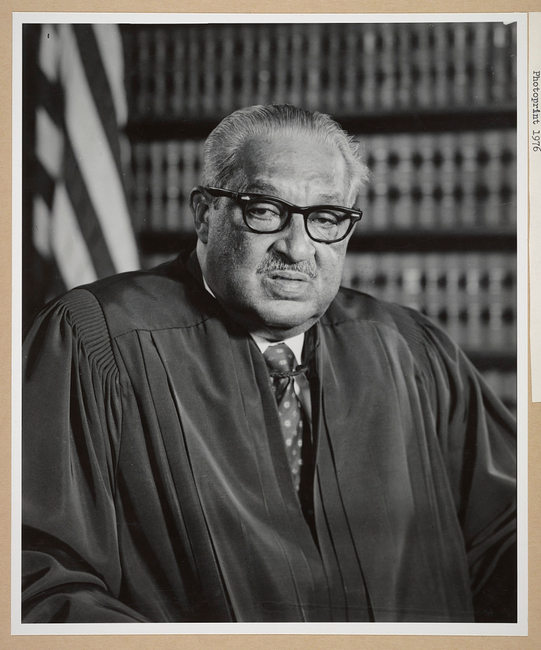
Brother Marshall was a member of Coal Creek Lodge No. 88 in Tulsa, Oklahoma, and a Scottish Rite Freemason. In 1951, he became an Active Member of the United Supreme Council, 33°, Prince Hall Affiliation, Southern Jurisdiction.
Not only did Brother Marshall embody the fundamental principles of Freemasonry in his work, but he was also not afraid to lean on his Brethren for support. In 1958, Brother Marshall recalled that without funding from Prince Hall Masons, he could not have argued many of the civil rights cases he represented: "Whenever and wherever I needed money and did not know of any other place to get it, Prince Hall Masons never let me down."
As the first African American justice appointed to the Supreme Court, where he spent 24 years on the bench, Brother Marshall has been a significant figure in American history for decades. But his impact on U.S. history began long before he reached the highest court. Brother Marshall was a hard-working attorney for many years, fighting tirelessly for the civil rights movement.
The Boy from Baltimore
Thoroughgood Marshall was born in Baltimore, Maryland, on June 2, 1908. Both his parents were descendants of enslaved people. His father, William Marshall, worked for the railroad, and his mother, Norma, was a teacher. Although his parents named him Thoroughgood after his great-grandfather, friends teased him for it, causing the boy to change his name to Thurgood when he was six.
Young Marshall took an interest in the U.S. Constitution and justice system, memorizing the text and watching court cases with his father. He learned to debate from watching the attorneys and practicing with his family. Brother Marshall later recalled that his father prepared him for a career in law by "teaching me to argue, by challenging my logic on every point, by making me prove every statement I made."
As a young Black boy in the early 1900s, Brother Marshall was not immune from the harsh segregation policies of the day. Through the social inequities of his youth, he grew up eager to fight on behalf of civil rights. Brother Marshall was a good student, studied hard, and graduated high school a year early in 1925. He enrolled in Pennsylvania's historically Black college, Lincoln University, where he earned a bachelor's degree in American literature and philosophy. While at Lincoln, he married Vivian "Buster" Burey; the couple was together until her passing in 1955.
Ending Segregation
Ready to pursue his law degree, Brother Marshall applied to the University of Maryland School of Law but was unfairly discriminated against and rejected for being Black. He instead enrolled at Howard University, a historically Black college, and graduated at the top of his class in 1933. The young attorney soon opened his private practice back home in Baltimore, where he often served poor clients free of charge. Brother Marshall soon affiliated himself with the National Association for the Advancement of Colored People (NAACP), where he worked for many years.
In 1935, Brother Marshall worked a case on behalf of the NAACP close to his heart: the landmark discrimination suit Murray v. Pearson. The local NAACP sued the University of Maryland Law School for its segregation policy, claiming it violated the Fourteenth Amendment. He won the suit, marking the first of his many victories for racial justice in America.
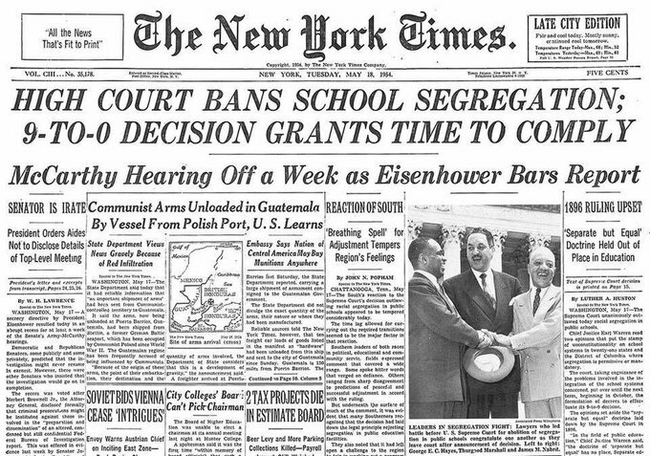
The following year, Marshall became the NAACP's chief legal counsel. Under his leadership, the organization focused on cases to help end segregation. Over the next few years, he won significant cases such as Sweat v. Painter and McLaurin v. Oklahoma Board of Regents of Higher Education, which helped nullify Jim Crow laws in higher education. The case he is perhaps most famous for winning was Brown v. Board of Education. In 1954, Brother Marshall successfully argued that segregation in public schools was unconstitutional in front of the Supreme Court. His victory was one of the most critical moments for the civil rights movement. Throughout his time representing the NAACP, Marshall won civil rights cases across the south. He was tireless in his efforts, working up to 450 cases simultaneously.
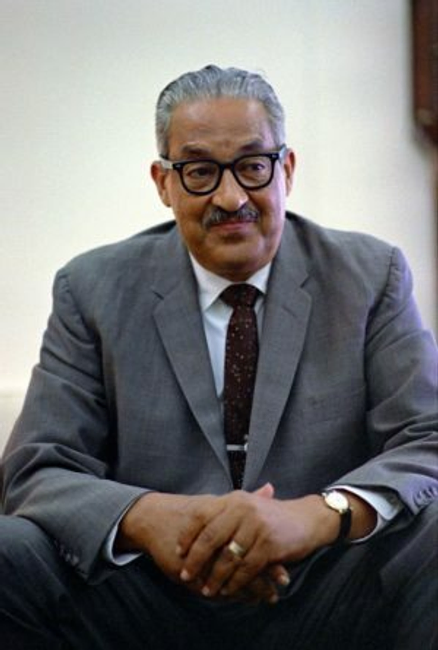
To the High Courts
On the heels of his pivotal courtroom victories, President John F. Kennedy appointed Brother Marshall to the U.S. Court of Appeals in 1961. It took nearly a year for the Senate to confirm him, with a group of southern senators acting as a roadblock. After his confirmation on September 11, 1962, he served for three years on the Court of Appeals.
Lyndon B. Johnson made Brother Marshall Solicitor General in 1965, positioning him to argue Supreme Court cases on behalf of the United States government. As Solicitor General, he won fourteen cases in just two years. He believed that serving as Solicitor General was "the most effective job" he held in his long and illustrious career.
After two successful years as Solicitor General, President Johnson appointed Brother Marshall to the U.S. Supreme Court. Johnson noted that the nomination was "the right thing to do, the right time to do it, the right man, and the right place." When he took the oath of office on October 2, 1967, Marshall became the first Black justice on the United States Supreme Court.

Justice, Thy Name is Thurgood
Brother Marshall used his position on the Supreme Court to support expanding civil and individual rights. He was committed to social progress from the day he was appointed until the day he retired in 1991. He was opposed to capital punishment, arguing that it was cruel and unusual and therefore unconstitutional under the Eighth Amendment. He believed the Constitution guaranteed all citizens the right to privacy and authored several influential corporate and securities law decisions, such as in Amalgamated Food Employees Union v. Logan Valley Plaza, which determined that “a mall was “public forum” and unable to exclude picketers.”
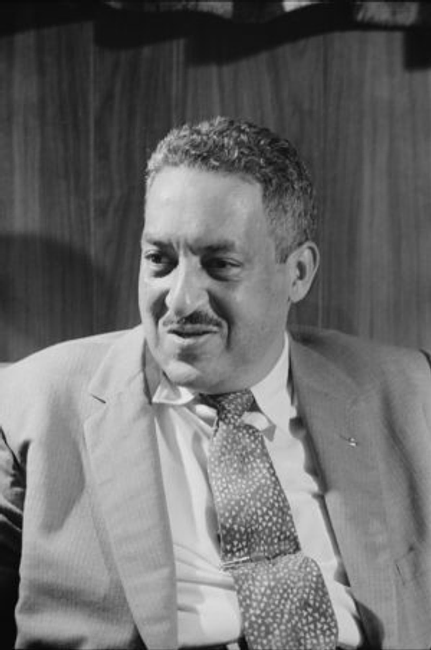
The Supreme Court that Brother Marshall was confirmed to was very different from the one he worked for in his later years. Thurgood saw his influence fade as the bench grew increasingly conservative over the 24 years he served. By the early 1990s, his health and ability to work had faded, forcing him to step down from his post. While on the Supreme Court, Brother Marshall participated in over 3,400 cases and authored 322 majority opinions.
Brother Marshall passed away in 1993 at age 84. His casket lay in repose in the Great Hall of the United States Supreme Court before his burial at Arlington National Cemetery. Over 4,000 people attended his funeral service at the National Cathedral, demonstrating Americans' overwhelming appreciation for his contributions to our nation.
Brother Marshall's astonishing career in law spanned nearly 60 years, and he was at the center of dramatic legal progress throughout that time. Not only were his 32 cases argued before the Supreme Court a record, but he also won 29 of them. He represented and won more cases before the high court than any other person, rightly earning his spot in history and our Masonic Hall of Fame
“The Masonic Hall of Fame: Extraordinary Freemasons in American History” is on view at The Scottish Rite Masonic Museum & Library, in Lexington, Massachusetts, until October 25, 2024. For more information about the exhibition and the museum, visit srmml.org.
Related Stories
Discover additional Scottish Rite blogs and news on this topic.
-
A Jolly Masonic Mug
History
Read More about A Jolly Masonic Mug
-
Manly P. Hall: Philosopher, Mystic, and Freemason
Famous Masons
Read More about Manly P. Hall: Philosopher, Mystic, and Freemason
-
What Does the Beehive Mean in Freemasonry?
Degrees
Read More about What Does the Beehive Mean in Freemasonry?


